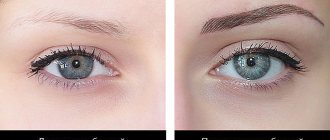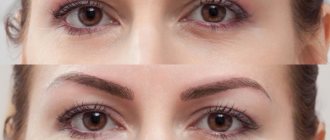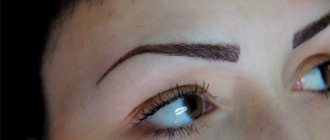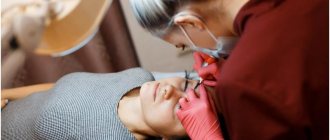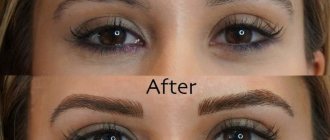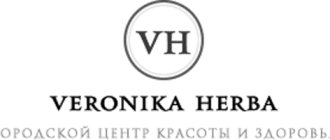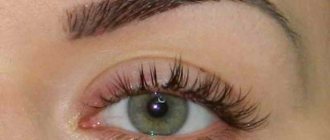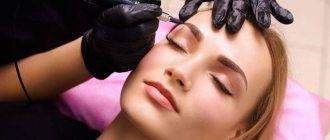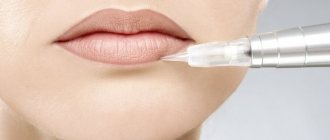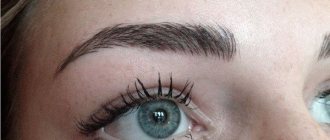Eyebrows make the face - Coco Chanel bequeathed it, but did not give more detailed instructions. What exactly did unsuccessful eyebrow tattooing do to the faces of Russian and domestic show business stars - see in our photo selection.
Subscribe and read Express Newspaper in:
Permanent makeup, or tattooing, is a real salvation for those who don’t have time to draw their eyebrows every morning using a whole arsenal of tools, from pencil to pomade and eyebrow gel. It is not surprising that this method of maintaining their appearance at the proper level is especially popular among show business stars with their busy schedules.
There’s just one catch - if the eyebrow tattoo is unsuccessful, you can’t erase it so easily. What's done is done, and you have to go as is.
Anastasia Volochkova
Anastasia Volochkova's eyebrows are an ideal example of how not to get a tattoo. They are too wide apart and pulled up, and their shade does not match the hair color. All this together creates the feeling that Volochkova’s eyebrows are from a completely different opera, or rather ballet.
The situation is further aggravated by the fact that Anastasia really likes to highlight her unsuccessful tattoo with white pearlescent shadows, applying them under her eyebrow. By the way, it’s better not to wear makeup this way at all; this technique is hopelessly outdated.
Color correction to correct a bad tattoo
One of the methods for correcting an unsuccessful tattoo, when the shape of the eyebrows is asymmetrical, or different in thickness, or has acquired an unexpected color, is color correction. The pigment is affected locally using a special chemical corrector.
Correctors have different colors, which when combined with the color of the tattoo gives a natural shade. So, when you apply an olive corrector with the addition of yellow to a blue tattoo, you can get a gray or light brown tint. A yellow or orange corrector can help get rid of blue eyebrows.
The sequence of the procedure is as follows:
- The area for color correction is prepared: treated with an antiseptic and anesthetic gel.
- With an integrated approach, part of the dye is removed with a remover. Then the shape and color of the eyebrows are corrected by adding pigments.
- The chemical composition is introduced under the skin using micropunctures.
Yulia Volkova
More on the topic
10 stars who overuse tanning and look scary
The ex-soloist of “Tatushki” Yulia Volkova does not know compromises on anything. If you have a tan, then it’s as if you fell asleep in a solarium; if you have lips, then it’s on half your face; if you have eyebrows, then it’s the kind that evokes fear and trembling. Apparently, Julia decided to go for a walk like that. Well, we believe that moderation is needed in everything, especially in eyebrow tattooing!
Correction and removal methods
The beauty industry is a vicious circle. Having decided to do one procedure, others will certainly follow. So, in response to an unsuccessful tattoo, two options are given: adjusting the result or removing it. Both options are painful and expensive.
Lightening
If the problem is only in color saturation, a specialist will solve this issue by injecting hydrogen peroxide under the skin. It is strictly not recommended to do this procedure on your own.
The process of an in-office lightening procedure goes like this: a cosmetologist uses a syringe to inject hydrogen peroxide under the skin to the depth of pigment injection. Peroxide partially breaks down the dye, reducing its saturation.
At home, you can try to lighten your tattoo using castor oil. It will take a long time, but it is safe for the skin and will strengthen the eyebrow hairs. Another home option is clarification with iodine or celandine. These substances cause skin burns, they must be used very carefully and if there is the slightest doubt, refuse this procedure.
Chemical agent
Unsuccessful eyebrow tattooing (photos and reviews indicate the effectiveness of the methods) is removed using chemical removers. These are active substances containing metal oxides, benzoic acid, n-propanol.
Sequence of the procedure:
- The surface of the skin is degreased and treated with an antiseptic.
- An anesthetic gel is applied to the tattoo site.
- Using a tattoo needle, a chemical is injected under the skin to break down the pigment.
The advantage of this method is that it can be used on a fresh tattoo. It is applied precisely and does not damage clean skin. Using a remover, you can partially remove the pigment by adjusting the shape. The disadvantages are that chemical components can cause allergies, severe peeling and crusting.
You should not agree to use a powerful remover that involves removing paint in 1 session. The skin may become seriously burned and scars may remain on the face.
The procedure requires compliance with precautionary rules, such as:
- Before the procedure, do not drink alcohol or medications that affect blood clotting.
- do not eat foods that increase blood pressure;
- do not visit the sauna or steam bath;
- do not be in the sun;
- Do not tear off the crusts of dead skin particles.
Dermabrasion
If you translate the name, you get “skin resurfacing.” This method is used to lighten tattoos. It is unlikely that it will be possible to completely remove the pigment. Resurfacing, or removing the top layer of skin, is done with a rough sea salt scrub. This is a painful procedure that must be performed regularly for 3 months.
To prepare the scrub, take salt (sea and food) in equal proportions and mix with a small amount of water. The skin is treated with laundry soap and the area where the permanent is applied is scrubbed for 20 minutes. In this case, you should be careful not to get salt on the mucous membranes of the eyes.
After the procedure, inflammation and abrasions remain. Therefore, damaged skin should be treated with healing agents at least 2 times a week. It is not safe to use such methods without the supervision of a specialist.
Electrocoagulation
Unsuccessful eyebrow tattooing can be removed using electrocoagulation. This is the effect of electrical impulses that break down the tattoo pigment. Photos of women who tried this method confirm the effectiveness of the technology.
The procedure looks like burning a layer of skin using a heated electrode. Therefore, after electrocoagulation, a burn forms on the skin. Along with its high effectiveness, this method has the disadvantage that after exposure to electric current it takes about 1 month to restore the appearance of the skin.
Cryotherapy
Cryotherapy is a method of exposing the skin to liquid nitrogen. Very low temperatures of liquid nitrogen cause local freezing and subsequent tissue death in the treated area. After processing the tattoo, the pigment comes off with a crust.
The procedure does not take long. The site of exposure is anesthetized with novocaine. After the procedure, the skin must be treated 1-2 times a week with wound-healing agents, protected from ultraviolet radiation, temperature changes (visiting a sauna) and aggressive environmental conditions.
Laser removal
The most popular, effective and expensive method for removing the consequences of an unsuccessful tattoo is laser therapy. The essence of this method is the splitting of pigment through exposure to a light beam of a certain intensity.
The most popular is the neodymium laser. It is effective in removing all types of eyebrow tattoos (powder spraying, microblading, classic tattooing). Laser removal can be used for partial correction or complete removal of an unwanted result.
The procedure is painful and expensive. Please note that complete tattoo removal may require 3 or more procedures. The number of impacts depends on the depth of the pigment and the freshness of the tattoo. A gap of 1 month should be strictly observed between sessions.
The most difficult thing to remove is an old tattoo caused by an unknown dye. It happens that when a laser is exposed to paints containing metals, the color of the tattoo does not disappear, but changes to the radically opposite (green, red).
The temperature of the laser is not so high as to cause skin burns. Therefore, if the procedure is performed correctly, the skin is not damaged. But if skin care conditions are not followed after the procedure, inflammation and crusts may form. They should absolutely not be torn off, so that scars do not form later.
Removing permanent makeup with salt
The method is painful, like other folk methods, and carries risks. Requires at least 3 months of systematic work. To lighten the dye you need:
- Sea salt without additives;
- Add a little water to obtain a thick paste;
- Degrease the skin using tar soap;
- Treat the pigmented area for 20 minutes.
The salt mixture has an aggressive effect on the skin, causing redness, itching, and in rare cases, scarring.
After the salt scrub, apply a healing preparation - Panthenol, Bepanten. In case of contact with mucous membranes, rinse thoroughly with running water. Do not allow the composition to come into contact with mucous membranes.
First day care
Immediately after the procedure, two problems arise that should be addressed sequentially. The first is the release of the ichor; it is removed using a cotton pad or a sterile napkin.
The second problem is swelling of the skin, which is a reaction to damage to the integrity of the skin. When such a symptom appears, the use of antihistamines prescribed by a specialist is indicated.
You can use compresses from herbal decoctions (chamomile, calendula, sage, string). The main thing is to make sure that the wet cloth does not fall on the area of the brow ridges, but lies on the surface, next to them.
Advice from experienced cosmetologists
There are no significant complications after home tattoo removal. Swelling, local redness, changes in hair tone - all these are current conditions during the procedure and are not critical.
Attention! Swelling can be corrected with chlorhexidine lotions, which cool the dermis and disinfect wounds. When wounds and scars appear, healing ointments are applied locally
It is recommended to apply the compositions until a good result is obtained.
There are times when the master does not advise immediately using wound-healing compositions; at such moments it is better to postpone it and listen to his advice. While applying makeup, bruises and scars may occur; in this case, it is recommended to apply effective compositions for bruises and cuts.
How to fix things if you fail
If the result of the procedure for applying permanent makeup does not suit you, they decide where to carry out the correction: in the same salon or contact another specialist. In the first case, issues regarding the time and cost of the corrective session are settled with the salon; in the second, the money is returned. To remove pigment from eyebrows, laser, special compounds (removers) or scrubbing the skin with cosmetics containing solid particles are used.
Insurance against failure: measures to take before going to the salon
In order not to have to regret the decision to get eyebrow tattooing, an appointment at the salon should be preceded by careful preparation. First of all, it is necessary to collect as much information as possible about the upcoming procedure, existing contraindications and other factors that affect the result. A consultation with the specialist with whom you plan to make an appointment will help you obtain such information.
The second important step is to make sure that the cosmetologist is sufficiently qualified. The salon will provide you with a cosmetologist’s portfolio containing certificates confirming the development of professional competencies in the field of tattooing. In addition, such a portfolio usually contains examples of previously completed work.
If the salon refuses to provide documents confirming the qualifications of the master, the quality of the paints and equipment used, or information about previously performed procedures, this is a reason to seriously think about changing the place where the permanent is performed. It is also worth refusing the services of a cosmetologist who starts work without collecting data on the client’s health status.
The third step, which will help you make sure you make the right choice, is to study reviews about the work of the salon and the master on thematic forums in your city. The presence of 2-5 negative reviews is a reason to reconsider your choice.
Finally, a service agreement must be concluded with the salon. This will be the basis for claims in the future. The contract clearly states the scope of services provided, their cost, the pigment and antiseptics used, as well as the procedure for resolving disputes, performing corrections or removing permanents.
Of course, all these measures cannot serve as a 100% guarantee that you are completely protected from failure. However, the risk of such a development of events will be noticeably less than when receiving service from a person about whom you know nothing.
What not to do after the session
The recovery period includes a list of strict restrictions:
- washing the frontal part of the face is prohibited in the first three days, this is fraught with infection through the skin, since the immune system is weakened and there is an open wound;
- no decorative cosmetics are applied to the forehead area for 4 weeks due to accelerated healing of the epidermis;
- during the same period of time it is prohibited to visit the sauna, swimming pool and other public places;
- tearing off the cortical layer until it falls off on its own threatens to alter the tattoo, because the pigment may not take root;
- fresh permanent makeup does not like sudden changes in temperature and direct exposure to sunlight, so it is recommended to use sunscreen.
The specialist advises using a solution of chlorhexidine and dexapanthenol (wound healing cream) at intervals of several hours for the first 2-3 days. If there is annoying swelling, apply ice packs. Contact with cold water is prohibited, as moisture slows down the skin restoration process. The duration of the effect after the work of the master lasts for up to three years. On average, color renewal is required once a year, as it gradually fades.
When using the hair application technique, correction is possible after 1.5-2 years. Depends on the thoroughness of care and the individual characteristics of the woman’s skin. Before choosing a specialist, you should carefully study client reviews with photos. The price of the procedure depends on the chosen method of work, the cost of the salon’s services and the qualifications of the specialist.
